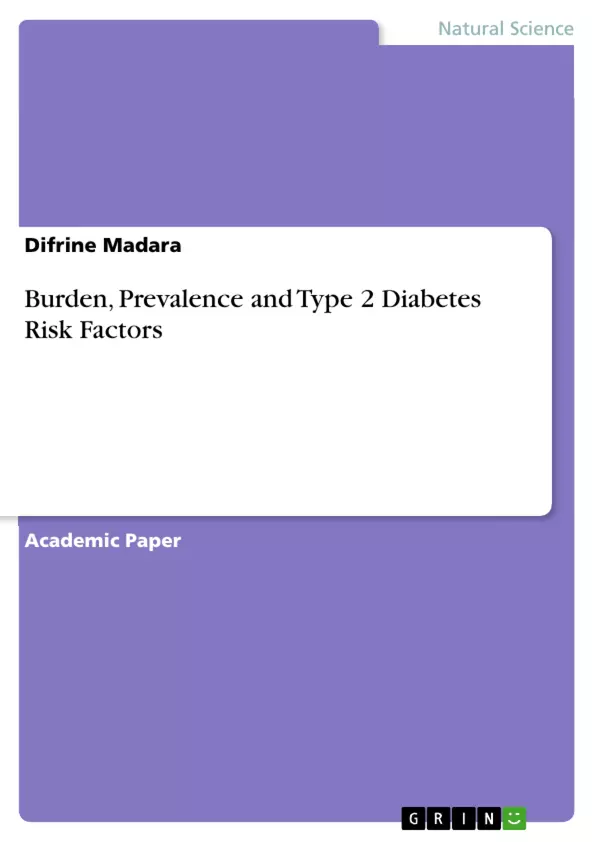This paper explores the prevalence, burden and type 2 diabetes risk factors in the United States. Diabetes is one of the most common types of metabolic disorders globally. Diabetes can be defined as a metabolic disorder where an individual suffers from a high blood sugar levels over a long period of time. Diabetic conditions arise when the pancreas cannot produce enough insulin or the body cells do not react appropriately to the insulin being produced.
Some of the symptoms of diabetes include increased thirst, frequent urination and increased hunger. If not well managed, diabetes can easily lead to serious long term complications such as cardiovascular disease, stroke, chronic kidney disease, foot ulcers and damage to the eyes among others. There are various forms of diabetes such as type 1 diabetes and type 2 etc. Type 2 diabetes is the most common form of the disease and is sometimes known as the non-insulin dependent diabetes. People who suffer from Type 2 diabetes are not able to respond effectively to insulin, thus their liver and muscle cells become insulin resistant.
Inhaltsverzeichnis (Table of Contents)
- Introduction
- Analysis and discussion
- Cause, signs and symptoms of type 2 diabetes
- Distribution, burden and prevalence of type 2 diabetes in the United States
- Risk factors
- Risk factor management
Zielsetzung und Themenschwerpunkte (Objectives and Key Themes)
This paper aims to investigate the prevalence, burden, and risk factors associated with type 2 diabetes in the United States. The study explores the various aspects of the disease, including its causes, symptoms, distribution, and the impact it has on public health and socioeconomic development.
- Prevalence and distribution of type 2 diabetes in the US
- The burden of type 2 diabetes on individuals and society
- Risk factors contributing to the development of type 2 diabetes
- Strategies for managing type 2 diabetes and its risk factors
- The socioeconomic impact of type 2 diabetes on the US
Zusammenfassung der Kapitel (Chapter Summaries)
The introduction provides a general overview of diabetes, its characteristics, and the different types. It highlights the prevalence and burden of the disease globally and specifically in the United States. The "Analysis and discussion" section delves into the causes, signs, and symptoms of type 2 diabetes. It explores the distribution and prevalence of the disease in the United States, focusing on demographic factors, geographical variations, and the associated costs. Additionally, the section examines various risk factors, including genetic predispositions, environmental factors, and lifestyle choices. The "Risk factor management" section discusses strategies for controlling and managing type 2 diabetes, emphasizing the importance of lifestyle modifications, medication, and early diagnosis.
Schlüsselwörter (Keywords)
Type 2 diabetes, prevalence, burden, risk factors, United States, genetic factors, environmental factors, lifestyle, management, socioeconomic impact, public health, diabetes belt, cost, treatment, prevention, remission, Gestational Diabetes Mellitus (GDM).
- Citar trabajo
- Difrine Madara (Autor), 2019, Burden, Prevalence and Type 2 Diabetes Risk Factors, Múnich, GRIN Verlag, https://www.grin.com/document/508258



